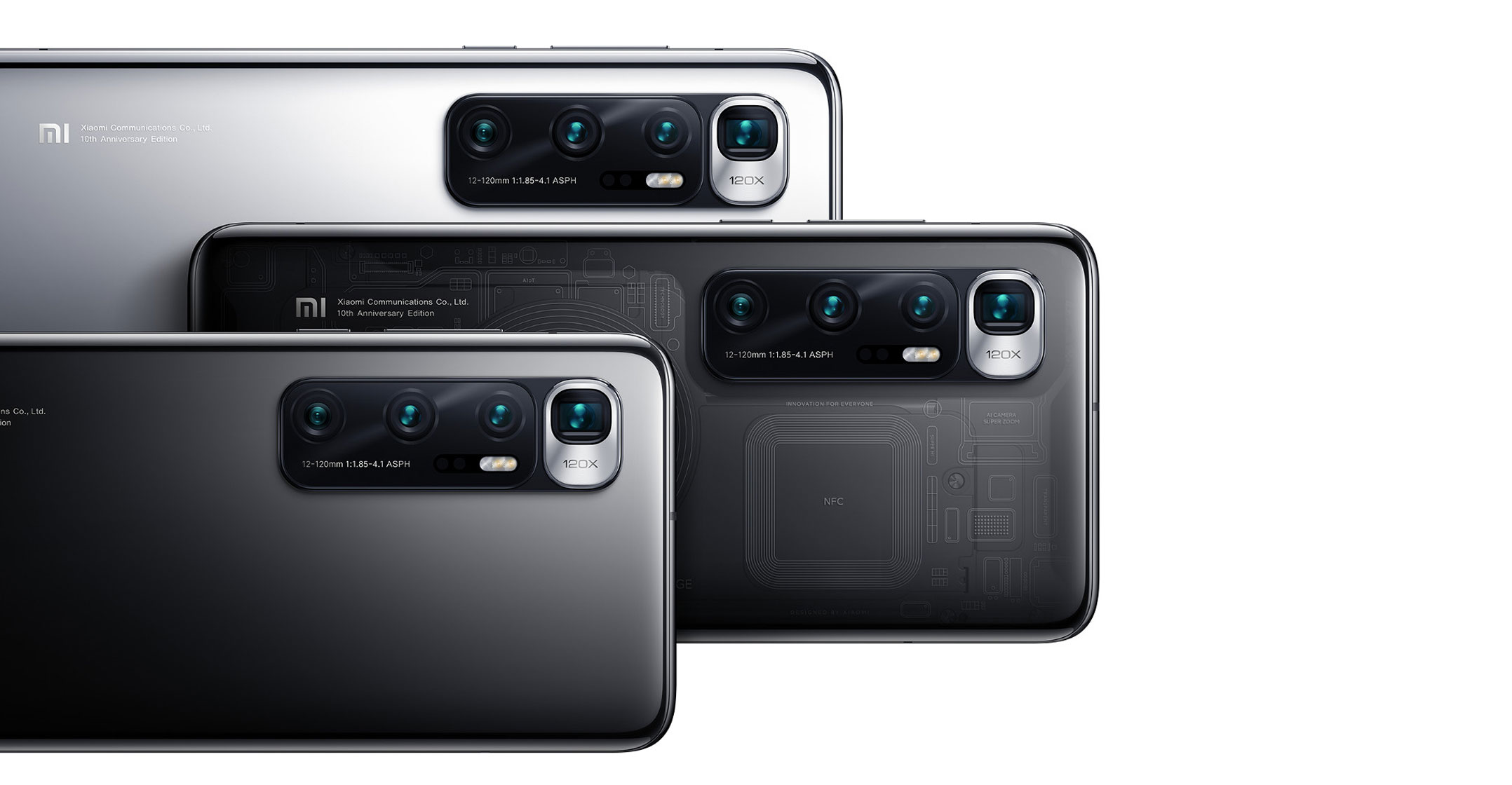
Xiaomi launched its latest high-spec flagship Android phone and celebrated the company’s 10th anniversary in a presentation hosted by co-founder and CEO Lei Jun on Tuesday.
The 6.7-inch Mi 10 Ultra adds to the rapidly expanding stable of 5G smartphones on the market, differentiating itself with a 120x zoom system nestled in a large multi-camera array on the phone’s back alongside a super-fast 120W charger in the box.
Now the world’s fourth largest smartphone brand, Xiaomi was founded by a team including serial entrepreneur Lei and former Google engineering director Lin Bin in Beijing in early 2010. Pioneering an Internet-based sales and marketing model, Xiaomi became an instant hit in China where most mobile devices were sold by brick-and-mortar resellers and telecommunications carriers.
The company distinguished itself by selling phones with sleek designs — commonly accused of imitating Apple’s iPhone too closely — the most up-to-date processors and prices that were a fraction of those from competitors such as Apple, Samsung Electronics and Lenovo.
In an effort to expand its appeal and markets beyond China, Xiaomi made a big splash in 2013 by hiring Google’s Hugo Barra, then Android vice president, to lead its international efforts. With his help, the company undertook a campaign to shed its widespread image as an iPhone copycat and invested more in developing its own design and engineering credentials. The company expects to spend 10-billion yuan (R25.2-billion) on research and development this year, Lei said.
Online focus
At the zenith of its powers, Xiaomi briefly held the number-three spot among global smartphone makers and was China’s leader. But around 2016, local competitors Oppo and Vivo cut into Xiaomi’s market share by adopting the opposite strategy to Lei’s online focus: enlisting tens of thousands of private electronics store owners to sell their devices in small towns and villages. The move unlocked access to rural residents eager for their first smartphone, a market with hundreds of millions of potential buyers that Xiaomi wasn’t able to reach.
After some supply chain issues around the same time, Xiaomi slumped to seventh in global smartphone shipments, according to IDC data, and Lei hired former Qualcomm executive Wang Xiang to steer Xiaomi’s new international expansion strategies from India to Spain and the UK.
 The Chinese company has been on a recent run of introducing futuristic-looking phones featuring industry firsts, such as bezel-less screens and exotic materials like ceramic bodies. Lei has also tried to lift Xiaomi beyond smartphones with an expansive array of other consumer products that can be purchased from the company’s online store, including laptops and luggage.
The Chinese company has been on a recent run of introducing futuristic-looking phones featuring industry firsts, such as bezel-less screens and exotic materials like ceramic bodies. Lei has also tried to lift Xiaomi beyond smartphones with an expansive array of other consumer products that can be purchased from the company’s online store, including laptops and luggage.
The Beijing-based company has invested in a large number of hardware start-ups to make Mi-branded appliances and electronics from rice cookers to scooters. Yet the efforts have so far failed to convince investors that Xiaomi is an Internet company rather than a hardware vendor. Xiaomi’s stock has mostly traded below its initial public offering price since its debut in Hong Kong two years ago. — (c) 2020 Bloomberg LP

